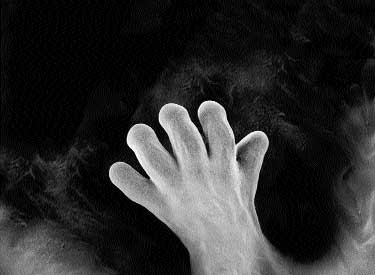 New on IMAX: You
New on IMAX: You
By Mark Burns
Luke wakes up and opens his eyes to the world. You see the top layer of cells on his retina scorched off. Routine, so the narrator says.
So goes The Human Body, an IMAX documentary directed by Peter Georgi. It’s a voyage through parts of body human that could easily be your own. Except, maybe, that cell-level segment on conception.
At the heart of The Human Body is a family of four soon to be five: Uncle Buster, Aunt Heather, gestating Wyatt, teen nephew Luke and preteen niece Zannah. Over the course of the film you visit, among other things, Luke’s lungs, Zannah’s ear hairs, Heather’s digestive system, the genetic fusion that begat Wyatt, and Buster’s — well, it seems nobody much cares what’s on in Buster, just what he puts out.
Pencil-thin medical camera insertions, X-ray, magnetic resonance imaging, thermal imaging, sonograms, electron microscopy, a bit of computer animation and a host of other techniques make for intriguing images. As complement, bold sound effects and narrated trivia liven the journey.
 Neatly binding it all together is a simple, humanizing storyline following real-life characters through daily life. Luke’s bike ride to school is an X-ray of skeleton boy chased by skeleton dog into skeleton town. Thought is a bright red brain cell impulse shooting by at 250 miles per hour. Conception is an armada of six-foot procreative seekers, magnified 82,000 times over (world record) for the screen, flagellating to their oviated goal as Marvin Gaye’s “Let’s Get It On” sets the tone.
Neatly binding it all together is a simple, humanizing storyline following real-life characters through daily life. Luke’s bike ride to school is an X-ray of skeleton boy chased by skeleton dog into skeleton town. Thought is a bright red brain cell impulse shooting by at 250 miles per hour. Conception is an armada of six-foot procreative seekers, magnified 82,000 times over (world record) for the screen, flagellating to their oviated goal as Marvin Gaye’s “Let’s Get It On” sets the tone.
And the stomach. Dear God, the stomach.
For the system digestive, the film follows a bit of salad along the journey from Heather’s plate to Heather’s stomach. Thankfully, Heather is voracious enough while eating for two that she does not bother chewing first, thus quelling some of the gross-out factor. Some. A tomato chunk, on screen about as big as five of your heads, gets churned down the esophagus, plunging into a pool of stomach acid and random other eaten bits with a big sploosh. Beyond here it’s on with the bile and an indistinguishable blob of lunch on its way south, going off camera mercifully short of becoming the stuff of flush.
Naturally, this is done with ample sound effects. As food winds its route on screen, the film’s low-end bass makes your abdominal cavity rumble. Nice touch. (Note: For added interactivity, eat pasta salad before entering theater.)
There’s still more to see: newborns demonstrating a mysterious drowning reflex; a bit of pimple popping — if it ever disturbed you in the bathroom mirror just wait till you see it in IMAX scale. Yes, some scenes seem fit to raise a tomato chunk or two, but scientific grossness is offset by the dignified, British-accent narration of Dr. Robert Winston.
It’s a fun and enlightening ride. The only complaint is that the fun is cut too short. Near the end, when Heather finally births her babe, it’s but a few simple moments as her new son is lifted out wiped down handed off swaddled cute. Fin. It all happens so swiftly and cleanly that you almost feel gypped. “Hey,” you nearly say, “Where’s the ‘ick?’ They don’t even zoom into the placenta?”
But, on second thought, that’s not so bad, and you walk away in case they do.
Produced by BBC and Discovery Pictures in association with Maryland Science Center and the Science Museum, London. Shows 12:10pm daily; 3:20pm SaSu; 4:20pm M-F; 6:30pm Th-Su; 9:30pm FSa; no evening shows Oct. 20 @ Maryland Science Center, Baltimore. $7 before 6pm; $9 for one show or $12.50 for two after 6pm: 410/685-5225. www.mdsci.org.
Great documentary • 43 minutes • NR: medical grossness